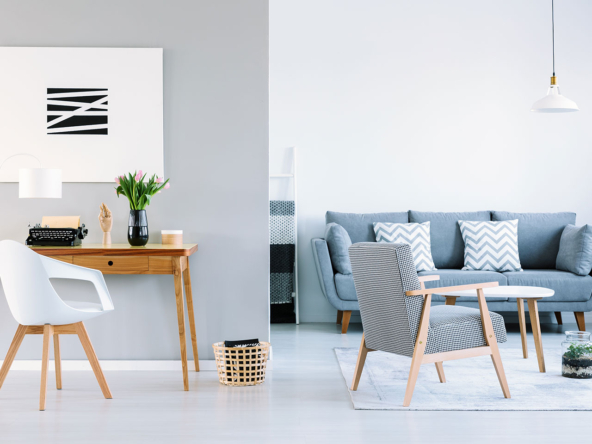Light is one of the most influential elements in interior design and plays a crucial role in how we perceive and experience our spaces. Both natural and artificial light affect not only the aesthetics of a room but also our mood, productivity, and overall well-being. Understanding how to manage lighting in your home can completely transform the ambiance and functionality of any space.
1. Natural Light: A priceless treasure, without a doubt the most desired in any home. It has the ability to make a space feel larger, more welcoming, and connected to the outside world. Making the most of it is essential, not only for its ability to enhance colors and textures, but also for its health benefits. Exposure to sunlight regulates our circadian rhythms, improves mood, and can increase vitamin D levels. To maximize the entry of natural light, opt for lightweight curtains, strategically placed mirrors, and light-colored, reflective furniture.
2. Artificial Light: Create the Perfect Ambience Artificial light is crucial for transforming spaces when natural light isn’t sufficient. There are three main types of lighting: ambient, task, and accent. Ambient lighting provides general, even illumination, while task lighting is functional and used for specific activities like reading or cooking. Accent lighting is used to highlight decorative elements, such as artwork or plants, adding depth and drama to a room. Combining these light sources allows you to create different atmospheres depending on the occasion.
3. Light and Emotions: Light has a direct impact on our emotions. Warm light, with yellow and orange tones, creates a feeling of comfort and relaxation, ideal for areas like the living room or bedroom. On the other hand, cool light, which tends toward white and blue tones, is more stimulating and promotes concentration, making it perfect for home offices or kitchens.
4. Strategies to Optimize Light: To make the most of the light in your spaces, it’s important to use a combination of natural and artificial light. Place lamps at different heights to add dimension, and consider using dimmer switches to adjust the lighting based on the time of day or the activity you’re doing.
In conclusion, light is a fundamental component of interior design. Not only does it define how our spaces look and feel, but it also has a profound effect on our daily well-being. Playing with different light sources and temperatures can help you create a home that is not only visually appealing but also promotes a sense of harmony and well-being.
Source: citezeninmobiliaria.com



